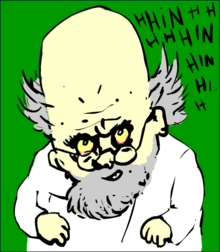Applied Science AQA/Photosynthesis

Setting Applied context
[edit | edit source]Many scientists try to understand and control the photosynthetic process in order to increase crop yields and health, producing plants that are tolerant to insects, drought and disease. Knowledge of photosynthesis in plants can also be adapted to man-made systems to provide efficient ways to collect and use solar energy.
| Syllabus Content | What you need to do |
|---|---|
| • photosynthesis as a process of organic carbon capture, to include:
• essential raw materials and their sources • two stages in photosynthesis: light-dependent (water hydrolysed into oxygen and hydrogen) and light-independent (hydrogen combines with carbon dioxide to produce carbohydrate) • initial conversion to carbohydrates and subsequent conversions to lipids and proteins |
|
| • green plants (producers) as the initiators of food chains
• efficiency of food chains, to include: • constraints • solar, temperature, water, nutrient and space availability for plants • energy transfer out of the food chain through respiration, excretion and movement |
|
| • gross primary production (GPP)
• net primary production (NPP) • biomass/energy pyramids to demonstrate productivity • advantages/disadvantages of following a meat-free/reduced meat diet. |
Exploration of key ideas (must be original text, not C&P) – level checked by AQA
[edit | edit source]In general, point students towards the approach to take, as opposed to just giving them information.
Glycolysis
[edit | edit source]Glycolysis takes place in the cells cytoplasm. Glucose is phosphorylated using ATP, triosphosphate (TP) is produced.
The oxidation of TP to pyruvate (pyruvic acid) with a net gain of ATP and reduced nicotinamide adenine dinucleotide (NADH).

Link Reaction
[edit | edit source]explanation 2
Krebs Cycle
[edit | edit source]explanation 3
Electron transport chain
[edit | edit source]The electron transport chain is the final chain. In this stage the link reaction and Krebs cycle both produce reduced coenzymes (reduced NAD and reduced FAD). The coenzymes release hydrogen which are passed down through the carriers in the electron transport chain through a series of redox reactions. As the electrons are passed from carrier to carrier they release energy which is used to move protons into the intermembrane space. As the protons move back into the matrix through ATP synthase energy is used to combine ADP and phosphate to produce ATP. In the mitochondrial matrix at the end of the transport chain, protons electrons and oxygen from the blood combine to form water. Oxygen is the final electron acceptor. This ensures the chain in continuous.
Study Task
[edit | edit source]Work to do to understand this topic e.g. research, analysis
Careers and Organisations
[edit | edit source]Carry out some research into these jobs in this area. (Feel free to add other jobs you find.)
| Research these roles: | What are the benefits of this role to society? | What organisations would employ someone in this role?
(Where would they work?) |
What would someone in this role have to do within the organisation? | What scientifically-related skills do they need to have?
What techniques do they need to have mastered? |
What experience is needed to undertake this role and its responsibilities within an organisation? | What other science personnel will they work with in their organisation. |
|---|---|---|---|---|---|---|
| Job 1 | ||||||
| Job 2 |
Relevant practical/s
[edit | edit source]– relating to criteria skills
Quick questions
[edit | edit source]What are the physiological measurements involved in photosynthesis?
in what different ways can energy be lost in the transfer between trophic levels in a food chain?
What are the definitions for Gross Primary Production (GPP) and Net Primary Production (NPP)?
click to reveal answer
Exam-style questions
[edit | edit source]– can we use old AQA qs… e.g. from more than 5 years ago? With Examiner comments
click to reveal answer
Links
[edit | edit source]to other sections within this book
to good external websites (including AQA website, wikipedia, relevant applications / companies) - also considering links in spec
References / Bibliography
[edit | edit source]of recommended text books
including mapped refs to existing books